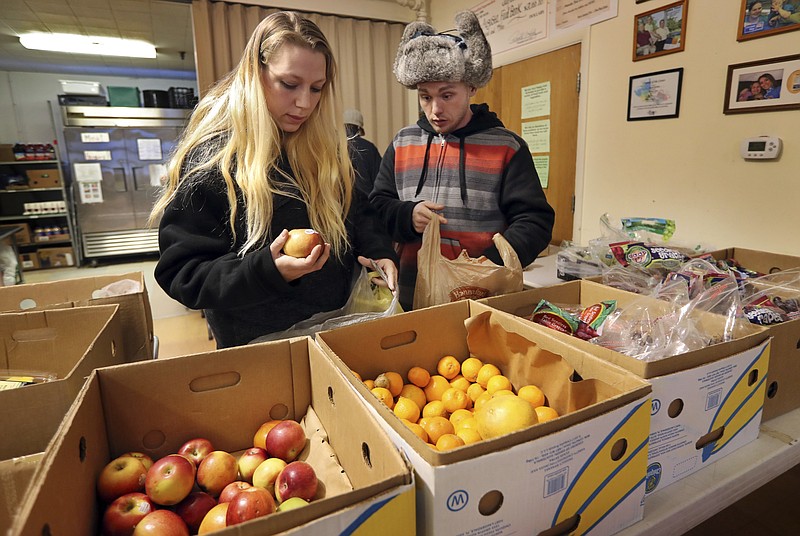The number of Tennesseans receiving food stamps dropped under 1 million for the first time in a decade at the start of 2018 as the state's improving economy helped lift more Tennesseans out of poverty, according to new state figures.
About one of every seven Tennesseans was enrolled in the federally funded Supplemental Nutrition Assistance Program in January, including 49,687 residents in Hamilton County. That was the lowest since before the Great Recession hit the economy a decade ago and down by more than 25 percent from the peak levels reached in the wake of the economic downturn.
The number of Hamilton County residents on the supplemental nutrition assistance program also has fallen by more than 10,000 over the past four years as jobs have become more plentiful and wages have begun to rise. In 2013, nearly one of every five people in Chattanooga was getting SNAP benefits.
"These numbers are extremely encouraging," said Stephanie Whitt, a former assistant commissioner for the Tennessee Department of Human Services who now serves as executive vice president of the Beacon Center of Tennessee, a conservative think tank in Nashville. "This is a huge deal for the state of Tennessee and a great indicator that what we have been doing as a state has been working."
Beacon estimates government food stamp benefits are down about $57 million a month from the peak reached in the wake of the Great Recession. In January, the last month for which statistics are available, DHS said that $123.9 million in SNAP benefits were paid to 999,421 individuals who lived in 492,290 households.
Further cuts in the number of people getting government food assistance are expected this year after the state lifted the waiver last month on the federal work requirement for able-bodied to get food stamps in most of Tennessee, including Hamilton County.
In 79 of Tennessee's 95 counties where unemployment is relatively low, people without children or disabilities now have to work at least 20 hours a week to receive SNAP benefits. The cuts will be fully effective by May.
The work requirements, which were waived a decade ago when the economy soured, are expected to affect 58,000 Tennesseans who are on the SNAP program, according to the Tennessee Department of Human Services.
"How do we with a straight face say, 'Oh, there's still extraordinary circumstances in Tennessee that still demand a waiver'? Absolutely not," Tennessee Gov. Bill Haslam said when he announced the change in September. "When we hit record low unemployment three months in a row, then it comes a time to look around and say, 'Are we doing everything the right way?' We looked at this and thought it's hard to justify a waiver."
Unemployment in Tennessee fell to an all-time record low of 3.3 percent at the end of 2017, well below the U.S. jobless rate of 4.1 percent.
But Keith Barnes, director of nutrition advocacy for the Tennessee Justice Center, said advocates for the poor remain concerned that too many needy individuals will be left out of the food assistance they need because of the rules on the restored work requirements. Barnes cited one example already where an autistic person who has not been able to work was denied SNAP benefits because he didn't have the proper documentation.
"Most of the declines that we have seen so far reflects the SNAP or food stamp program working exactly as intended," Barnes said. "When times are tough for everybody, it is there to help those who can't make ends meet to put food on the table and as the economy improves we're now seeing declining participation."
Barnes said the benefits paid under SNAP amount to only about $1.40 per meal per person and help sustain many children, families, disabled and elderly persons who would otherwise not have enough to eat. Over the past decade and a half, the share of households with a working adult receiving SNAP benefits nearly tripled from 58,000 in 2001 to 144,000 in 2016, according to DHS.
"More people are working and yet the pay for many of those who are working is still not sufficient and they are still in need of this food assistance," Barnes said.
Contact staff writer Dave Flessner at dflessner@timesfreepress.com or at 423-757-6340.
